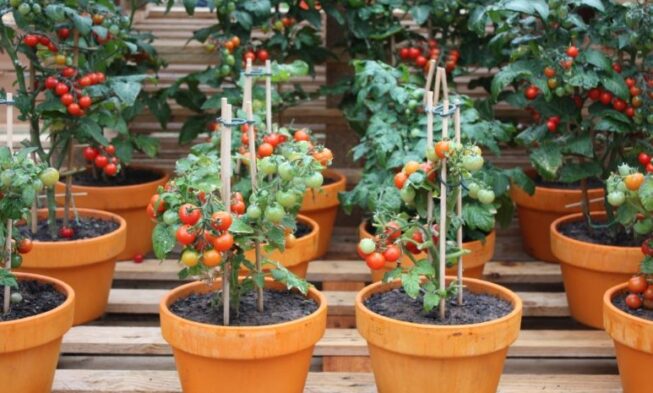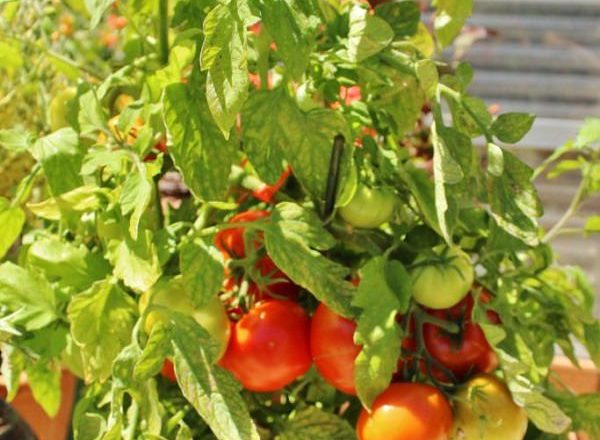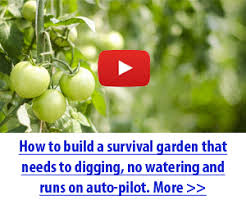In a recent gardeners’ survey the tomato took first place in the homegrown vegetable popularity contest. And … no surprise … it wasn’t even close—cucumbers and peppers, in second and third place, were 40 points behind! The fresh-picked tomato experience is not just for those that own a sunny plot of rich soil. You can successfully grow tomatoes on a patio, deck, or even a fire escape, as long as it captures at least 6 hours of sunlight a day.
1. Find a Large PotEven small tomato varieties have substantial root mass. The minimum pot size for a patio tomato should be 14 inches in diameter, with a capacity of at least 5 gallons. For best results go with a 17- to 20-inch pot that holds 15 to 20 gallons. And try to avoid black; it may cause the soil to overheat. The larger the pot size, the easier it will be to keep your plantsfrom drying out, which will help prevent blossom end rot. A large pot will also help prevent your becoming a slave to the water needs of your potted tomatoes.
2. Use a Suitable Soil MixA standard soilless potting medium will not serve your tomatoes well. Supplement a lightweight peat-based mix with compost,a soil-based potting mix, and a bulking ingredient such as coir, bark bits, or perlite. Or mix your own medium. Ohio University recommends 25% each potting soil, perlite, peat moss, and compost. A healthy handful of worm castings can only help, and if you have access to partially composted pine or fir bark, add a portion of that as well.
3. Choose an Appropriate VarietyVariety choices for container growing are practically endless, with newpatio tomatoesbeing introduced each year. Look for varieties labeled determinate, or those described as “bush” or short-season tomatoes. Some container varieties, sometimes referred to as tumbler-type tomatoes, have a cascading rather than bush habit, which eliminates the need for staking. These are suitable for window boxes.

It is possible to grow sprawling indeterminate garden favorites in containers, but keep in mind that large vines require roomy quarters—15- to 20-gallon (or larger!) pots—to sustain the roots and to accommodate stakes or cages. In general, varieties with small- to medium-sized fruits are better container choices than large beefsteaks… and good resistance to diseases is always a plus.
4. Stake EarlyDon’t wait to stakepotted tomatoes. Position stakes or cages for those varieties that need support early on, before plants get floppy.
5. Fertilize RegularlyStart your tomatoes off with a slow-release fertilizer mixed in with the top several inches of the soil. It should have a balanced ratio of N-P-K(5-5-5, for example). When your plants begin flowering, this is your cue to begin weekly feeding. Look for a balanced soluble fertilizer that will provide both the macro- and micronutrient needs of your tomatoes, such as a fish/seaweed emulsion, and follow the directions on the product label.

6. Water FrequentlyTry never to let your tomato plants wilt. Water your seedlings in well, and keep the soil moist but not sopping wet. Early in the season, this might mean weekly watering, but once your plants size up, you’ll probably be watering every day. If you plan to go away it might make sense to purchase an inexpensive container drip system and a timer.
source : homegardenseedassociation




